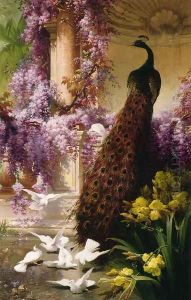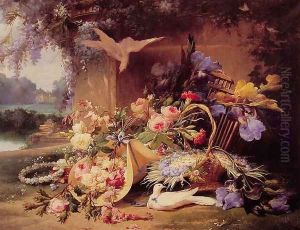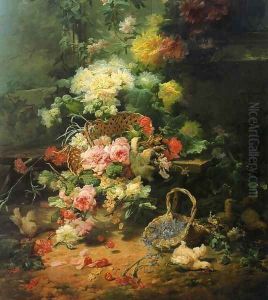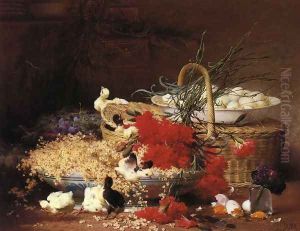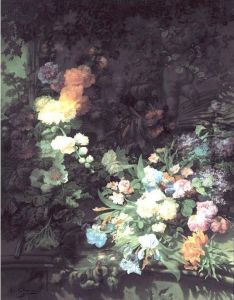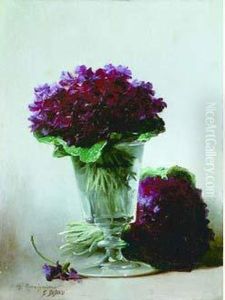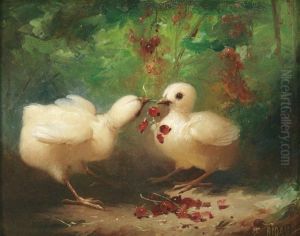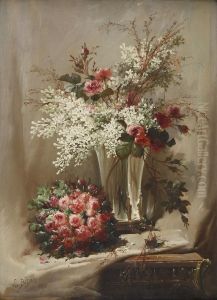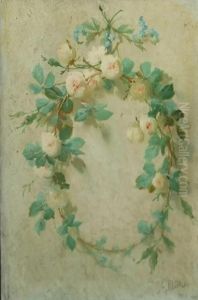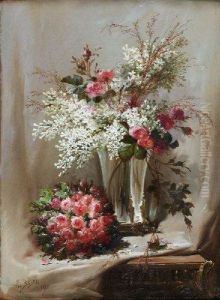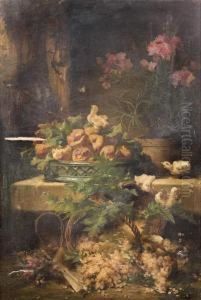Eugene Bidau Paintings
Eugène Bidau was a notable French painter born in 1839 in Coulonges-sur-l'Autize, a small town in the Nouvelle-Aquitaine region of France. His artistic journey began at a young age, influenced by the rich cultural heritage of France and the burgeoning art scene of the 19th century. Bidau's work is best characterized by its intricate detail, vibrant color palette, and the incorporation of natural and floral motifs, which positioned him as a significant figure in the Ecole de Paris and the broader Symbolist movement.
Throughout his career, Bidau was profoundly inspired by nature and the beauty of the natural world. This is vividly reflected in his paintings, which often feature lush landscapes, exotic flowers, and serene garden scenes. His fascination with flowers was not merely an aesthetic choice but also a symbolic exploration of themes such as beauty, decay, and the ephemeral nature of life. Bidau's technique and subject matter resonated with the Symbolist movement's emphasis on emotion, mysticism, and the representation of ideas beyond the visible world.
Bidau received formal art education at the École des Beaux-Arts in Paris, where he was trained under the tutelage of renowned artists of the time. This education provided him with a solid foundation in the classical traditions of painting, which he later built upon with his unique style and thematic preferences. Despite the classical training, Bidau's work is noted for its departure from the strictures of academic art, embracing instead a more personal and innovative approach to painting.
His contributions to the art world were recognized in his lifetime, with Bidau receiving various awards and accolades. He exhibited his work at several prestigious venues, including the Paris Salon, where he garnered respect and admiration from both critics and the public. Bidau's paintings were celebrated for their originality, technical skill, and the profound sense of wonder and beauty they evoked.
Eugène Bidau's legacy continues to be appreciated by art historians and collectors alike. His work remains a testament to the Symbolist movement and its quest to capture the unseen and the mystical through the medium of paint. Bidau died in 1906, leaving behind a body of work that continues to enchant and inspire those who encounter it, offering a window into the artist's profound connection with the natural world and his exploration of the symbolic potential of art.
